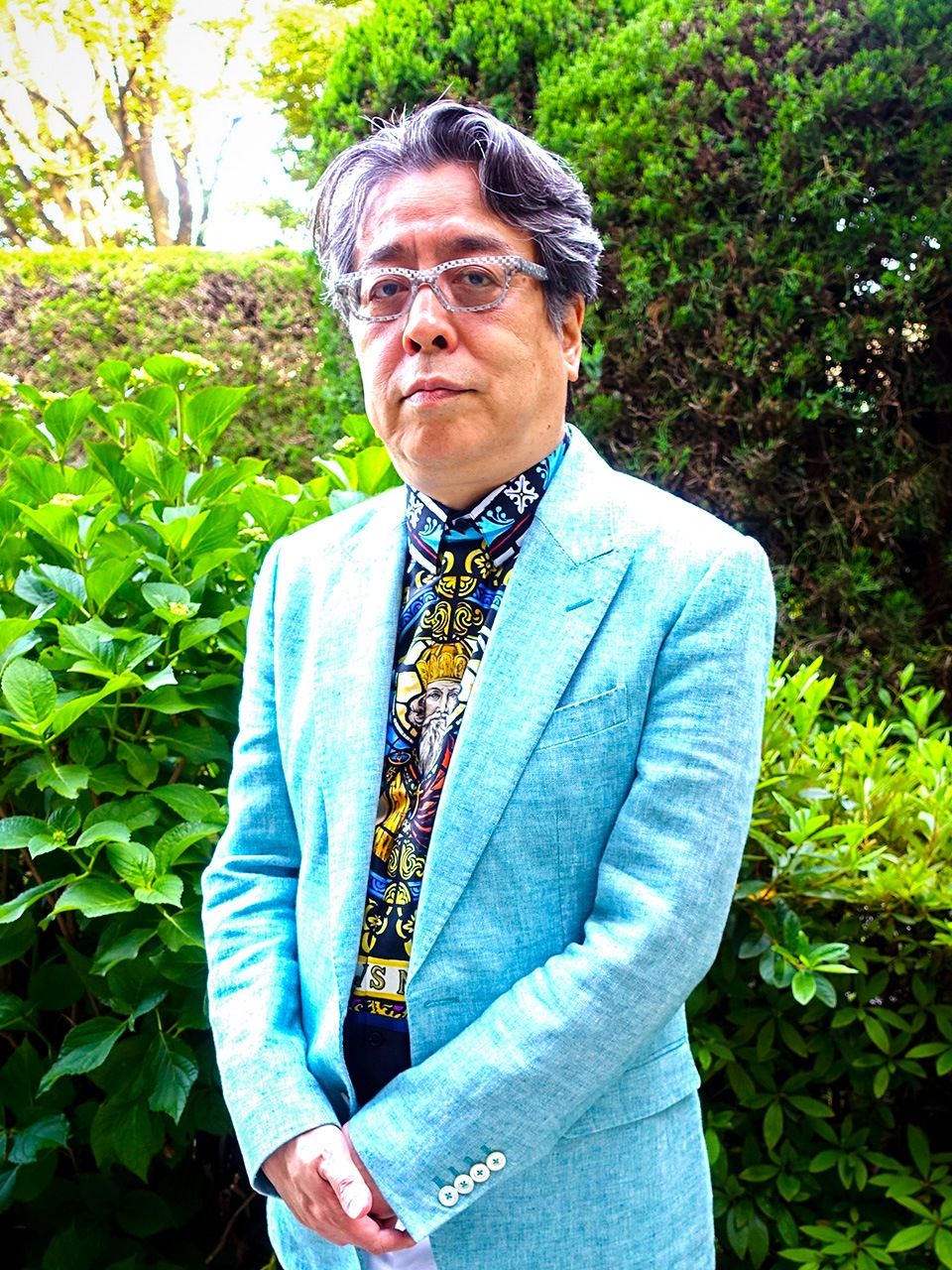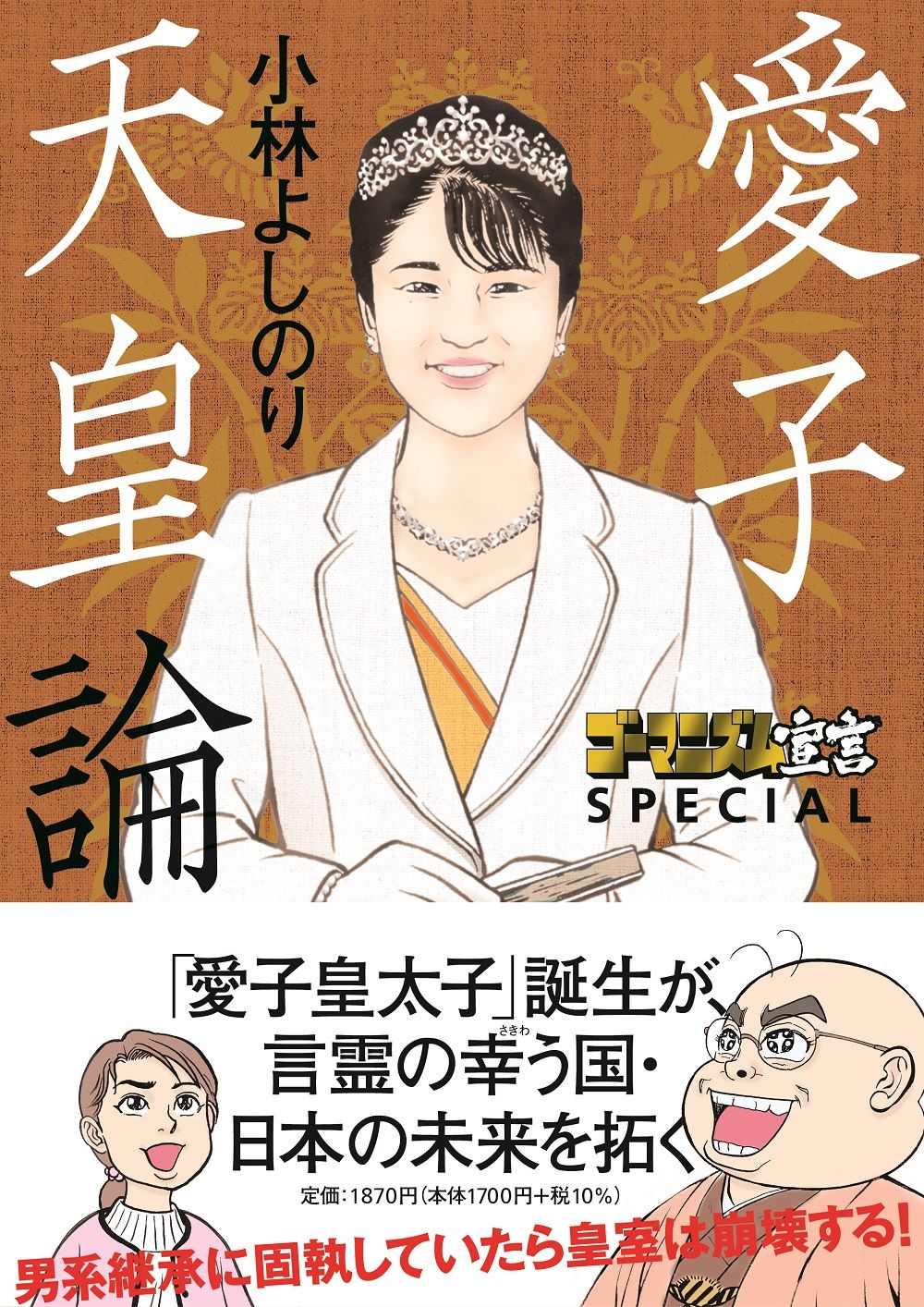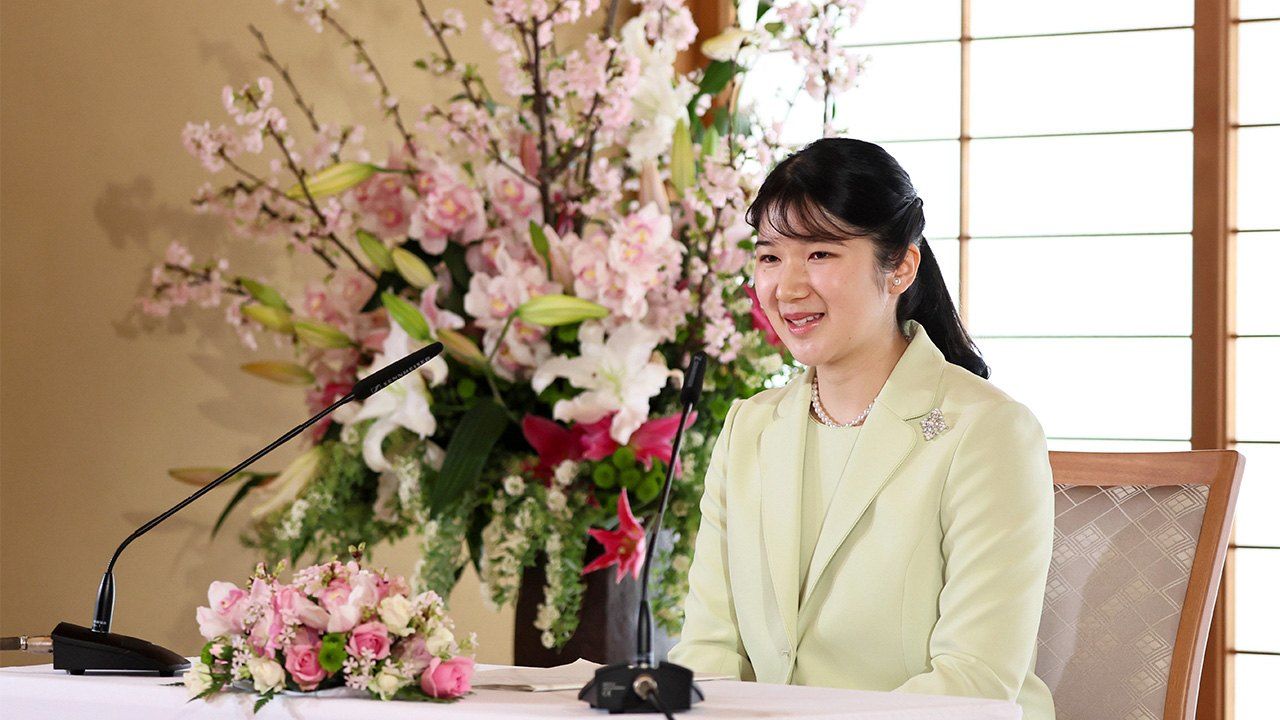
Aiko on the Throne? Event Seeks to Pave the Way for a Female Emperor
Imperial Family Politics Society- English
- 日本語
- 简体字
- 繁體字
- Français
- Español
- العربية
- Русский
Booming Interest Nationwide
A four-hour public discussion event titled “Making Aiko the Imperial Heir” was held on July 23, 2023, in Tokyo. The event was planned with a capacity crowd of about 500 people in mind, but nearly 1,000 people from all over Japan applied to attend.
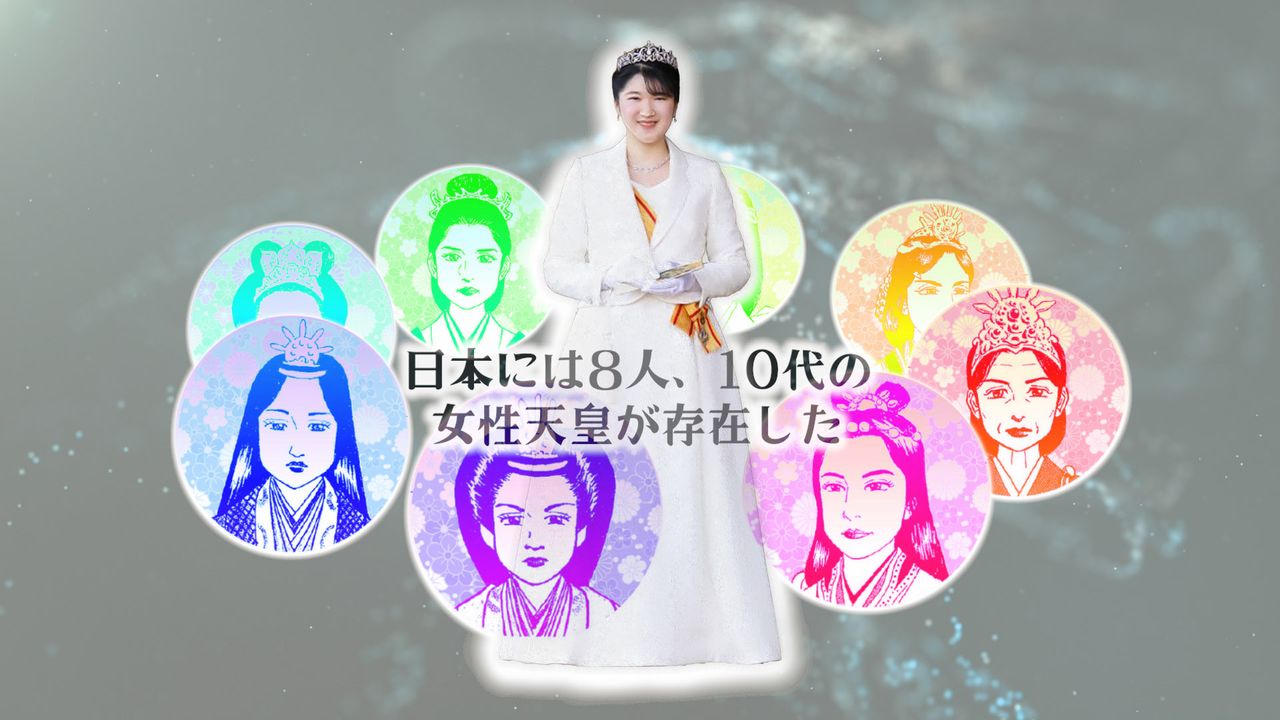
An image of Princess Aiko and past female emperors, displayed as an exhibit at the entrance to the “Making Aiko the Imperial Heir” public event. (Courtesy of Kobayashi Yoshinori)
The event’s organizer was Kobayashi Yoshinori, 69, a cartoonist and author of works including the manga Aiko Tennō ron (Princess Aiko as Emperor) who has long been outspoken on imperial household issues. Other panelists included former Diet members, journalists, and academic researchers including Takamori Akinori, a researcher on imperial matters and Shintō religious issues who has long been an opinion leader in this area.
After the panel discussion, the panelists engaged in a heated debate over the issue of a female emperor. In this debate, Kobayashi played the role of an advocate for imperial inheritance to be based on patrilineal succession only, an argument also laid out in his manga Princess Aiko as Emperor, published in June 2023. This allowed panelists and attendees alike to understand the arguments of both camps.
The movement for a female emperor has gathered steam over time. It was recently referenced in a report published in December 2021 by a panel of experts selected by the government. This report, however, ruled out the idea of an Emperor Aiko, concluding that the male lineage approach to imperial succession should be preserved. This would mean that Prince Hisahito, the eldest son of Prince Akishino (the current emperor’s younger brother), would eventually inherit the throne. However, Prince Hisahito is the only male member of his generation of the imperial family, putting the stability of the line of succession in significant jeopardy.
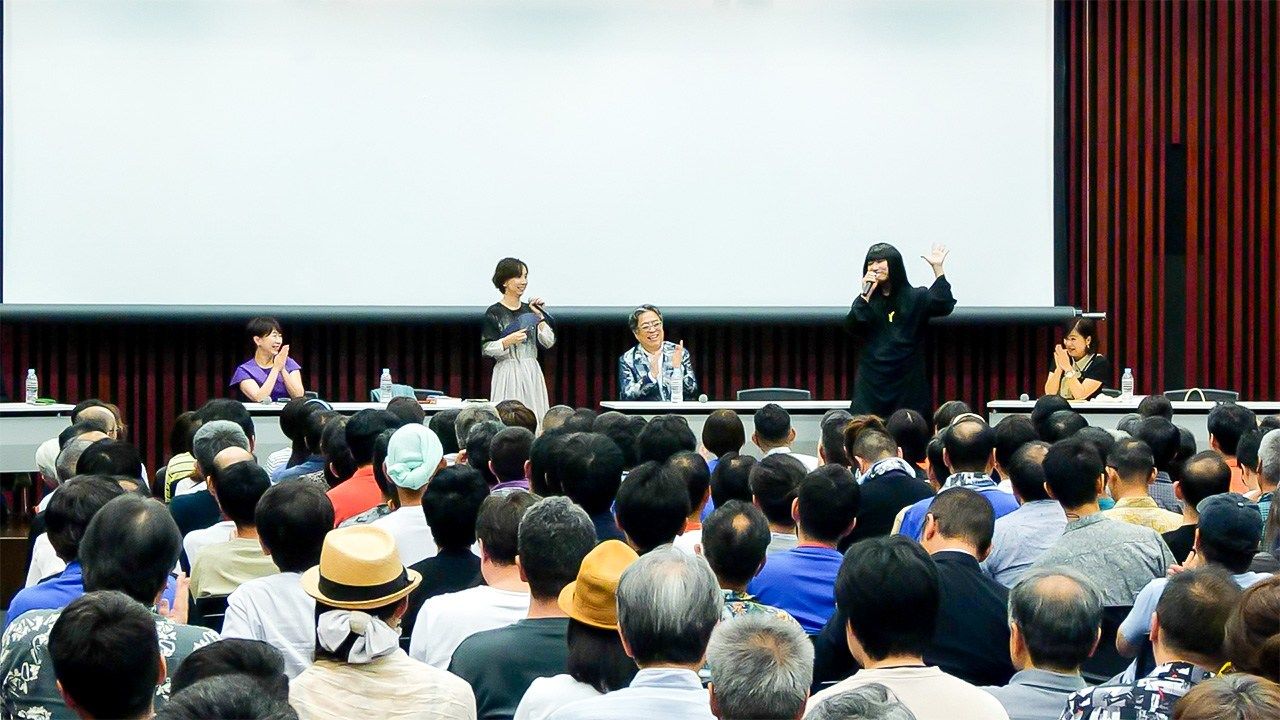
Kobayashi Yoshinori, seated at center stage, leads the public discussion event on July 23, 2023. (Courtesy of Kobayashi Yoshinori)
This panel of experts presented two other proposals for securing the imperial family’s male lineage. One was for female members of the family to retain their imperial status after marriage—they currently lose this status and become ordinary citizens on marriage. Another proposal was for former members of the imperial family who lost their noble status after World War II to reacquire imperial status. Deliberation on the issue was supposed to begin in the Diet in January 2022. However, a year and a half later, no movement has been seen on this issue.
What does the Japanese Constitution say about this? Article 1 simply states that that the emperor is the symbol of the state and the unity of the Japanese people, while sovereignty lies with the people. Article 2 states that the throne should be dynastic, and the Imperial House Law will dictate how succession is to take place. There is no constitutional prohibition on the idea of a female emperor, and the public has been in favor of such an idea for some time. Why, then, is the Diet reluctant to discuss and amend the Imperial House Law in line with the thinking of the Japanese people, “with whom resides sovereign power”?
A Loss to Lobbying Efforts
Kobayashi believes that the reason for this is that the conservative supporters of the male lineage approach were better organized, and advocates of female lineage were therefore defeated in the lobbying of Diet members.
Kobayashi says: “The female lineage supporters are only a group of ordinary citizens with no campaign apparatus.” Backed by conservative political organizations, supporters of the male lineage approach, however, “were vocal and well organized, and went around to individual members of the ruling party to pressure them to maintain the male lineage approach. Even if ruling party Diet members are open to the idea of a female emperor, this pressure is slowing down debate on the issue of succession to the throne.”
Kobayashi admits to his own past on this point: “I used to be an advocate of male lineage approach.”
He has changed his mind, however. “It’s not always possible for a married couple to have a child, much less a boy. Currently, only the children of the imperial couple can inherit the throne, making the openings to succession in the current system the narrowest in Japanese history. At some point succession will come to a standstill, and the imperial family itself will cease to exist.”
Kobayashi argues: “If Princess Aiko marries and has a child, and that child becomes emperor, male lineage supporters will criticize that person, saying that because this is a matrilineal emperor, with imperial blood on the mother’s side, the ‘unbroken imperial line’ will be extinguished.”
However, he says, the most natural line of succession to the throne is the direct line: “The current Emperor has a daughter, Princess Aiko, and we should remember that, up through the Edo period [1603–1868], Japan had eight female emperors. No other country in the world had so many female monarchs. Originally, neither the male nor female lineage approach was the norm, but in 1889, the government legally adopted the male-lineage-only approach. However, many Japanese mistakenly believe this approach is a traditional Japanese institution. In this day of gender equality, why should Princess Aiko, a direct descendant of His Majesty the Emperor, be deprived of her role simply because she is a woman?”
In 2009 and 2010, Kobayashi published a series of works in which he advocated allowing a female emperor and imperial succession through the female lineage. In 2023, he published another manga outlining his treatise, Princess Aiko as Emperor.
Kobayashi’s caricatures of opponents of a female emperor in his latest publication earned him severe criticism from male lineage supporters. In the manga, however, Kobayashi presents himself as a protagonist to illustrate the arguments between the two factions. “The work takes a long time to read,” he admits, “but it has allowed people to study the issue, and we have gained a following of young people who support our stance. They are now able to argue against the many male chauvinists on social networking sites and in the media. Many of them also participated in our public discussion event.”
Kobayashi also notes there might be less vocal support in unexpected places: “I sent copies of the book to Diet members, and I actually received a thank you letter from one member who I was sure was an opponent of the ideas in it. The tide may be turning.”
Two Decades of Legal Neglect
This idea, however, is not new. In 2005, a different report by a panel of experts produced for the administration of Prime Minister Koizumi Jun’ichirō argued that it was extremely difficult to maintain a stable male line of succession. By giving priority to the “principle of direct descent,” the report proposed making no distinction between male and female descendants in designating the emperor’s first child as the natural successor. This change would have made Princess Aiko the next in line to succeed the throne. Soon after the publication of the report, however, news broke of Princess Akishino’s pregnancy. With the birth of Prince Hisahito in 2006, proposals to revise the Imperial House Law were shelved. The idea of continuing the male lineage approach then became the established policy during Abe Shinzō’s first term as prime minister.
What are the current plans for the “female emperor” faction? How do they envision a path to placing Aiko on the throne? One of the scholars who participated in the public discussion event was Takamori Akinori, a leader of the movement and the author of books including Josei tennō no seiritsu (Establishing a Female Emperor).
On the issue of imperial succession, Takamori is critical: “The government and the Diet have been negligent. They have left the issue of amending the Imperial House Law unresolved for nearly twenty years, meaning that Princess Aiko’s future remains in limbo. If we do not make legislative change soon, Prince Aiko, now twenty-one years of age, might marry, forcing her to leave the family and become an ordinary citizen. Both the Diet and the Japanese people need to realize that time is running out.”
The Current and Proposed Orders of Succession
Currently, there are only three people who could possibly succeed to the Imperial Throne. In order, they are Crown Prince Akishino (Fumihito), Prince Hisahito, his son, and Prince Hitachi (Masahito), the 87-year-old uncle to the current emperor.
Supporters of a female emperor/female lineage have proposed a legal amendment that would change Article 1 of the Imperial House Law, which limits succession to male lineage. The new wording would read, “The Imperial Throne shall be inherited by the direct descendants of the Imperial Lineage.” The order of succession would be then become (1) Princess Aiko; (2) Crown Prince Akishino; (3) Princess Kako; (4) Prince Hisahito; (5) Prince Hitachi; (6) Princess Akiko of Mikasa; (7) Princess Yōko of Mikasa; and (8) Princess Tsuguko of Takamado. This would increase the number of female members of the Imperial Family who are eligible to succeed to the throne and make Princess Aiko first in line.
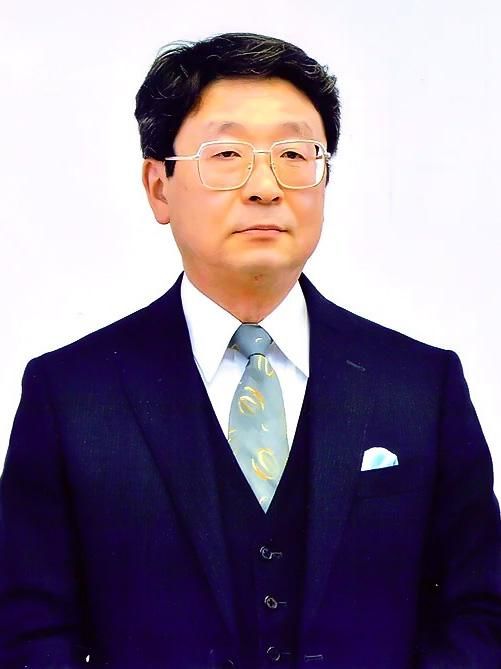
Takamori Akinori argues for a more expansive line of succession. (Courtesy of Takamori Akinori)
Takamori explains the importance of such a change:
“The revision of the Imperial House Law would make Princess Aiko the next in line to be tennō, or emperor, of Japan. Prince Akishino will no longer be the presumptive heir to the throne. However, Prince Akishino will still remain the head of the largest branch of the Imperial Family. We cannot know what choice Princess Kako, Hisahito’s currently unmarried older sister, will make in the future, but she could decide to remain a member of the imperial family and the third-in-line after her father. Prince Hisahito would be fourth-in-line and would still have important responsibilities in the family and its Akishino branch.”
Takamori takes pains to distance his stance from that of people who have made statements against Prince Akishino and his branch of the family. “There are those who continue to heartlessly bash the Akishino household. I must stress that those of us who support a female emperor have nothing in common with those who speak ill of members of the imperial family, a most regrettable practice.”
He comments critically on the proposals made by the government’s panel of experts in 2021. On the idea of allowing male descendants of nobles who lost their imperial status after World War II to reclaim this status, he notes: “Many of these descendants of former members of the Imperial Family are from a distant lineage who share common ancestors with emperors dating back to the Muromachi period, some six centuries ago. Even under prewar rules they would have lost their status as members of the imperial family.”
Takamori additionally notes that reinstating status for these people could have constitutional ramifications: “Suddenly giving special treatment to people who have been ordinary citizens for more than seventy-five years would also constitute discrimination based on family origin, thereby violating Article 14 of the Constitution. It is doubtful if any descendants of the former branch houses would want to acquire this imperial status in any case.”
On the proposed idea of allowing adoption within the Imperial Family of male heirs, the researcher also has doubts: “Would any members of the imperial family be open to adopting children from outside? The male lineage faction has come up with some unrealistic proposals that are not at all in line with public sentiment on these issues.”
A Decision Already Made?
In the fall of 2009, when Princess Aiko was seven years old and Prince Hisahito just three, Emperor (now Emperor Emeritus) Akihito made a remarkable statement at a press conference marking the twentieth anniversary of his accession to the throne: “ I think the issues concerning the system of imperial succession should be left to the deliberation in the Diet, but concerning the ideal role of the imperial family in the future, I think it is important that the views of the Crown Prince and Prince Akishino, who supports him, are respected.”
Both Kobayashi and Takamori believe that this means that the family has already reached a conclusion regarding the next Emperor. Both also believe that it is significant that Prince Akishino was officially designated as kōshi (the presumptive heir) in Japanese, rather than kōtaishi (crown prince). They note that when Emperor Hirohito (Shōwa) ascended to the throne in 1926, his younger brother, Prince Chichibu, was designated the kōshi as well. Prince Chichibu later lost this title and became second in line to the throne when Akihito, the future emperor, was made crown prince.
Takamori notes, though, that it might be difficult for the current emperor to make the Imperial Family’s consensus explicit: “There are those who say that his majesty should express his thoughts on future succession to the throne. However, unlike the issue of abdication, which is personal, this issue has become a political topic, which is something he cannot comment on. The people, the government, and the Diet should nevertheless try to carefully ascertain his feelings.”
Kobayashi’s Call from the Imperial Household Agency
In Princess Aiko as Emperor, Kobayashi sketched out an interesting scene from a series of monthly three-way meetings beginning in 2012 at the Imperial Palace. This meetings were between the emperor (now Emperor Emeritus Akihito), the crown prince (now Emperor Naruhito), and Prince Akishino, with the grand steward of the Imperial Household Agency also in attendance. In June 2013, Kobayashi received a sudden call from the Imperial Household Agency. He then met with the grand steward and other officials at a certain location in Tokyo.
It was then that Kobayashi learned that Imperial Household Agency officials were reading his manga Tennō ron (A Treatise on the Emperor), which gave him a “strange sensation.” Kobayashi says: “At that time, I became 100 percent convinced of the imperial couple’s intentions. As I left the room, I was handed a book written by Empress [now Empress Emerita] Michiko.” Kobayashi writes in Princess Aiko as Emperor that “there was no verbal agreement to not divulge the details of that day’s conversation,” although in the manga itself a caricature of a male lineage advocate brushes this off as “probably a made-up story.”
While Kobayashi does not reveal much about the conversation, the book he was given is a collection of Empress Michiko’s officially written responses and words at press conferences. It includes statements such as, “I believe that the imperial family has coexisted in line with the times, and that in each era, while inheriting past traditions, it has also changed, and thus has reached where it is today.”
Princess Aiko turned 20 in December 2021. She left a refreshing impression on the public at a March 2022 press conference held to mark her coming of age. As an adult member of the imperial family, she is now likely to become more active and take up greater responsibilities. As this happens, the idea of an “Emperor Aiko” will surely only grow stronger.
(Originally written in Japanese on August 18, 2023. Banner photo: Princess Aiko at a March 17, 2022, press conference following her Coming of Age ceremony, held in the Grand Hall of the Imperial Palace. © Jiji.)
emperor imperial family succession Princess Aiko Prince Hisahito
